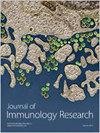PM2.5 通过影响肺部 HBD1 的表达导致细菌入侵增加
IF 3.5
3区 医学
Q2 IMMUNOLOGY
引用次数: 0
摘要
我们的研究针对细颗粒物(PM2.5)这一关键环境问题,重点关注其与感染风险增加之间的关联。我们探讨了 PM2.5 对人类 beta-defensin 1(HBD1)的影响,HBD1 是气道上皮中粘膜免疫的一种重要肽。我们利用 C57BL/6J 小鼠和人类支气管上皮细胞(HBE),研究了 PM2.5 暴露后铜绿假单胞菌(P. aeruginosa)感染对 HBD1 在 mRNA 和蛋白质水平表达的影响。研究发现,PM2.5对上皮细胞和动物的毒性随时间和浓度的变化而变化。值得注意的是,与单独暴露于铜绿假单胞菌的细胞相比,暴露于PM2.5和铜绿假单胞菌的HBE细胞显示出细菌侵袭增加和HBD1表达减少。同样,小鼠研究表明,同时暴露于 PM2.5 和铜绿假单胞菌会显著降低存活率并增加细菌侵袭。然而,通过施用外源 HBD1 可减轻这些有害影响。此外,我们的研究结果还强调了 PM2.5 暴露后 MAPK 和 NF-κB 通路的激活。抑制这些途径可有效增加 HBD1 的表达并减少细菌入侵。总之,我们的研究证实,PM2.5 暴露主要通过抑制 HBD1 的表达,加剧了铜绿假单胞菌在 HBE 细胞和小鼠模型中的侵袭。外源 HBD1 可抵消这种影响,其下调机制涉及 MAPK 和 NF-κB 通路。我们的研究致力于阐明与PM2.5暴露相关的肺部感染的发病机制,为制定预防和治疗策略提供了新的理论依据,具有重要的临床意义。本文章由计算机程序翻译,如有差异,请以英文原文为准。
PM2.5 Causes Increased Bacterial Invasion by Affecting HBD1 Expression in the Lung
Our research addresses the critical environmental issue of a fine particulate matter (PM2.5), focusing on its association with the increased infection risks. We explored the influence of PM2.5 on human beta-defensin 1 (HBD1), an essential peptide in mucosal immunity found in the airway epithelium. Using C57BL/6J mice and human bronchial epithelial cells (HBE), we examined the effects of PM2.5 exposure followed by Pseudomonas aeruginosa (P. aeruginosa) infection on HBD1 expression at both mRNA and protein levels. The study revealed that PM2.5’s toxicity to epithelial cells and animals varies with time and concentration. Notably, HBE cells exposed to PM2.5 and P. aeruginosa showed increased bacterial invasion and decreased HBD1 expression compared to the cells exposed to P. aeruginosa alone. Similarly, mice studies indicated that combined exposure to PM2.5 and P. aeruginosa significantly reduced survival rates and increased bacterial invasion. These harmful effects, however, were alleviated by administering exogenous HBD1. Furthermore, our findings highlight the activation of MAPK and NF-κB pathways following PM2.5 exposure. Inhibiting these pathways effectively increased HBD1 expression and diminished bacterial invasion. In summary, our study establishes that PM2.5 exposure intensifies P. aeruginosa invasion in both HBE cells and mouse models, primarily by suppressing HBD1 expression. This effect can be counteracted with exogenous HBD1, with the downregulation mechanism involving the MAPK and NF-κB pathways. Our study endeavors to elucidate the pathogenesis of lung infections associated with PM2.5 exposure, providing a novel theoretical basis for the development of prevention and treatment strategies, with substantial clinical significance.
求助全文
通过发布文献求助,成功后即可免费获取论文全文。
去求助
来源期刊

Journal of Immunology Research
IMMUNOLOGY-
CiteScore
6.90
自引率
2.40%
发文量
423
审稿时长
15 weeks
期刊介绍:
Journal of Immunology Research is a peer-reviewed, Open Access journal that provides a platform for scientists and clinicians working in different areas of immunology and therapy. The journal publishes research articles, review articles, as well as clinical studies related to classical immunology, molecular immunology, clinical immunology, cancer immunology, transplantation immunology, immune pathology, immunodeficiency, autoimmune diseases, immune disorders, and immunotherapy.
 求助内容:
求助内容: 应助结果提醒方式:
应助结果提醒方式:


